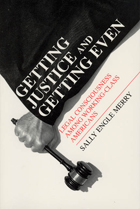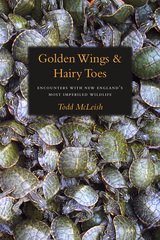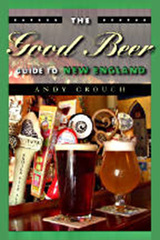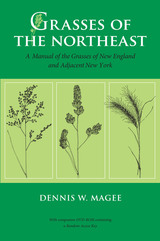149 books about New England and 5
start with G
149 books about New England and 5
149 books about New England
5 start with G start with G
5 start with G start with G

Getting Justice and Getting Even
Legal Consciousness among Working-Class Americans
Sally Engle Merry
University of Chicago Press, 1990
Ordinary Americans often bring family and neighborhood problems to court, seeking justice or revenge. The litigants in these local squabbles encounter law at its boundaries in the corridors of busy city courthouses, in the offices of court clerks, and in the church parlors used by mediation programs.
Getting Justice and Getting Even concerns the legal consciousness of working class Americans and their experiences with court and mediation. Following cases into and through the courts, Sally Engle Merry provides an ethnographic study of local law and of the people who use it in a New England city. The litigants, primarily white, native-born, and working class, go to court because as part of mainstream America they feel entitled to use its legal system. Although neither powerful nor highly educated, they expect the law's support when they face intolerable infringements of their rights, privacy, and safety. Yet as personal problems enter the legal system and move through mediation sessions, clerk's hearings, and prosecutor's conferences, the citizen plaintiff rapidly loses control of the process. Court officials and mediators interpret and characterize the meaning of these experiences, reframing and categorizing them in different discourses. Some plaintiffs yield to these interpretations, but others resist, struggling to assert their own version of the problem.
Ultimately, Merry exposes the paradox of legal entitlement. While going to court allows an individual to dominate domestic relationships, the litigant must increasingly yield control of the situation to the court that supplies that power.
Getting Justice and Getting Even concerns the legal consciousness of working class Americans and their experiences with court and mediation. Following cases into and through the courts, Sally Engle Merry provides an ethnographic study of local law and of the people who use it in a New England city. The litigants, primarily white, native-born, and working class, go to court because as part of mainstream America they feel entitled to use its legal system. Although neither powerful nor highly educated, they expect the law's support when they face intolerable infringements of their rights, privacy, and safety. Yet as personal problems enter the legal system and move through mediation sessions, clerk's hearings, and prosecutor's conferences, the citizen plaintiff rapidly loses control of the process. Court officials and mediators interpret and characterize the meaning of these experiences, reframing and categorizing them in different discourses. Some plaintiffs yield to these interpretations, but others resist, struggling to assert their own version of the problem.
Ultimately, Merry exposes the paradox of legal entitlement. While going to court allows an individual to dominate domestic relationships, the litigant must increasingly yield control of the situation to the court that supplies that power.
[more]

Global Trade and Visual Arts in Federal New England
Patricia Johnston
University of New Hampshire Press, 2014
A highly original and much-needed collection that explores the impact of Asian and Indian Ocean trade on the art and aesthetic sensibilities of New England port towns in the late eighteenth and early nineteenth centuries. This diverse, interdisciplinary volume adds to our understanding of visual representations of economic and cultural changes in New England as the region emerged as a global trading center, entering the highly prized East Indies trades. Examining a wide variety of commodities and forms including ceramics, textiles, engravings, paintings, architecture, and gardens, the contributors highlight New Englanders' imperial ambitions in a wider world.
This book will appeal to a broad audience of historians and students of American visual art, as well as scholars and students of fine and decorative arts.
Hardcover is un-jacketed.
This book will appeal to a broad audience of historians and students of American visual art, as well as scholars and students of fine and decorative arts.
Hardcover is un-jacketed.
[more]

Golden Wings & Hairy Toes
Encounters with New England’s Most Imperiled Wildlife
Todd McLeish
University Press of New England, 2009
This book profiles fourteen of New England’s most rare and endangered flora and fauna—mammals, birds, insects, plants, and fish—by following the biologists who are researching, monitoring, and protecting them. Each chapter includes a first-person account of the author’s experience with these experts, as well as details about the species’ life history, threats, and conservation strategies. McLeish traps bats in Vermont and lynx in Maine, gets attacked by marauding birds in Massachusetts, and observes the metamorphosis of dragonflies in Rhode Island. He visits historical cemeteries to see New England’s rarest plant, tracks sturgeon in the Connecticut River, and observes a parade of what may be the rarest mammal on earth, the North Atlantic right whale, in Cape Cod Bay. The book’s title comes from the name of one of the birds in the book, the golden-winged warbler, and the unusual characteristic used to distinguish the rare Indiana bat from its common cousins, its hairy toes. McLeish, a longtime wildlife advocate and essayist, has a gift for communicating scientific information in an interesting and accessible way. His goal in this book—to make an emotional connection to a variety of fascinating animals and plants—is successfully conveyed to the reader, who comes away amazed by the complexity of individual species and the ecosystems necessary for their survival. Sometimes there are surprises: how lynx benefit from the clear cutting of forests or how utility companies —often blamed for environmental degradation—have accidentally succeeded in creating excellent habitat for golden-winged warblers along their power line corridors. Such examples support McLeish’s assertion that we can meet the immense challenges to species preservation, such as global warming, acid rain, and mercury poisoning, as well as the difficulty of adding new species to the 1973 Endangered Species Act. As McLeish’s book shows, each rare species has an important story to tell about the causes of its population decline, the obstacles each face in rebuilding a sustainable population, and the people who go to extraordinary lengths to give these species a chance to thrive.
[more]

The Good Beer Guide to New England
Andy Crouch
University Press of New England, 2006
With wit, enthusiasm, and a deep respect for the craft of brewing, Andy Crouch profiles nearly one hundred establishments in New England, offering a description and history of each, as well as insights into each brewmaster's philosophy and brewing style. For each brewery and brewpub profiled, Crouch covers the range of beers available and identifies its flagship product; he also highlights his choice for its “best beer,” which is rarely its most popular or best known offering. Crouch offers judicious evaluations of food, ambience, and of course, the beer; he also provides information on the availability of tours, directions and parking, hours of operation, entertainment, local sights of interest, and whether beer is available for take-away. In addition, he includes essays on the brewing process, understanding and appreciating beer, and a list of “eleven great New England beer bars.” Whether well-brewed beer is the focus of a trip or a welcomed complement, beer enthusiasts and novices alike will find this guide a worthwhile companion wherever they travel in New England.
[more]

Grasses of the Northeast
A Manual of the Grasses of New England and Adjacent New York
Dennis W. Magee
University of Massachusetts Press, 2022
This book is designed to serve as a reference work, classroom textbook, and field manual for botanists, naturalists, and students interested in learning to identify and learn about the distinguishing features of grasses of the northeastern United States. Included are more than 380 species of grasses that have been documented as occurring in the region. The volume contains 246 range maps and 269 line drawings that clarify descriptions used in the keys and illustrate characteristics of the various kinds of grasses. Dennis W. Magee also provides a description of each genus and species along with synonyms and habitats. For anyone interested in an up-to-date treatment of the grasses of greater New England, this volume will be an invaluable resource. It is the only comprehensive technical guide devoted exclusively to the grasses of this region and presents a wealth of information in a precise, clear format.
The geographic scope of the work extends from the Canadian border south through Long Island and west to the Hudson River. But given the considerable overlap with the grass flora to the adjacent north, south, and west, the book will also be useful beyond New England and the bordering New York counties.
The volume includes an illustrated glossary of essential terms and concepts and a "how to use this manual" section. A CD-ROM with a multiple-entry identification guide, and hundreds of accompanying photographic images of individual species, is provided in a sleeve inside the back cover of the book.
The geographic scope of the work extends from the Canadian border south through Long Island and west to the Hudson River. But given the considerable overlap with the grass flora to the adjacent north, south, and west, the book will also be useful beyond New England and the bordering New York counties.
The volume includes an illustrated glossary of essential terms and concepts and a "how to use this manual" section. A CD-ROM with a multiple-entry identification guide, and hundreds of accompanying photographic images of individual species, is provided in a sleeve inside the back cover of the book.
[more]
READERS
Browse our collection.
PUBLISHERS
See BiblioVault's publisher services.
STUDENT SERVICES
Files for college accessibility offices.
UChicago Accessibility Resources
home | accessibility | search | about | contact us
BiblioVault ® 2001 - 2024
The University of Chicago Press









